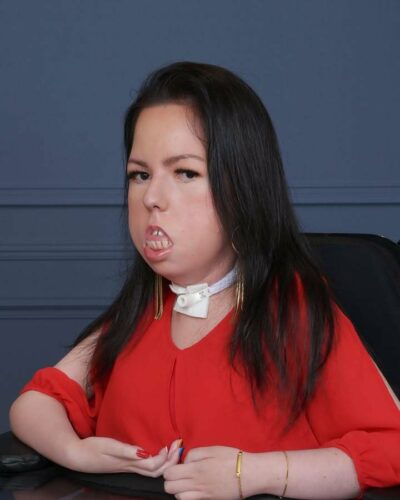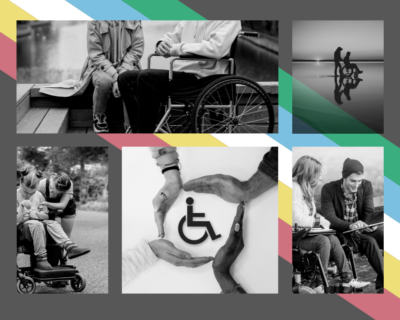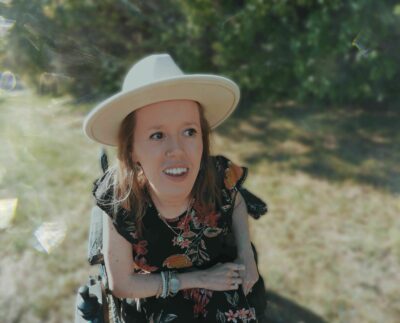New to disability community conversations? Things to consider
There are 5 factors that significantly impact how a person feels about their difference or loss of functionality
The fifth of the Australian public living with a disability are lumped together as a homogenous group of people, with similar needs and ways of thinking in the media and throughout society. In terms of the Disability community this is, as you would expect, spectacularly incorrect, there are multiple points of view. Navigating these differences in community conversations can be tricky for the uninitiated. Here is what I’ve learnt in the last nine years of interaction within the community.
There are 5 factors that significantly impact how a person feels about their difference or loss of functionality:
- Was the difference or loss of functionality present at birth or from a young age?
- Does the person have a stable or degenerative condition?
- Is the difference or loss of functionality visible or invisible to an observer?
- Is the difference or loss of functionality a new thing or has the person lived with it long enough for it to be the new accepted normal?
- How much does the difference or loss of functionality impact the persons everyday life and their sense of identity?
All of these factors will impact how much the persons disability is an accepted and embraced part of their identity. Despite societal messaging that disabilities are inherently negative and somehow other from the rest of the person, people living with disability over time accept and embrace their bodies like anyone else.
Identity or Person first language:
How a person feels about their disability will determine how they feel about things like using Person first or Identity first language. This article from PWDA (Person with a disability Australia) explains this in detail.
Identity first VS Person first language.
Excerpt:
“Identity first language which positions disability as an identity category. This language is known as ‘identity-first’ because the identifying word comes first in the sentence and highlights the person’s embrace of their identity. For example, “I am a disabled person, like I am an Australian person or a bisexual person.”
For disabled people, their disability is an aspect of their person that they can’t control, but that they embrace as part of who they are. As an identity category, disability does not merely describe an individual body or mind, but membership within a wider cultural group.”
‘PWDA, other Disabled People’s Organisations, governments, government and non-government institutions predominantly use ‘person-first’ language when referring to people with disability. Generally, this is on the basis that a person’s disability should not be unnecessarily focused on. The dehumanisation of people with disability is still a huge problem and has been for a long period of history, so we choose to preface our language with a reminder of personhood.
Phrases like ‘the disabled’ or calling someone ‘a wheelchair’ reflect the assumption that people are reduced to just their disability (even so far as to refer to them as their mobility aid). Defining people by their disability is often used as an excuse to ignore our humanity – to put us in a separate and lesser category so that non-disabled people don’t have to think about the wants, needs, rights or feelings of people with disability.”
Bottom line there is no right or wrong here and each individuals’ preferences should be respected. There however are things that you definitely should not say PWDA have put together a handy guide in regards.
Social Model of Disability:
The social model of disability accepts that Disability is a common fact of life and part of human diversity. In contrast to the medical model that sees difference as a problem for the individual in need of fixing.
For the Social model the real disability is created by an environment filled with physical, attitudinal, communication and social barriers. The removal of these barriers must be undertaken to enable people living with impairments to participate in society on an equal basis with others.
An example of this is how a person living with a neuro-muscular condition can be largely independent within an environment that has been set up for their needs but becomes much more disabled when they step outside their door into spaces not equipped.
More information can be found at the PWDA website.
Ableism:
Ableism is the discrimination of and social prejudice against people with disabilities based on the belief that typical abilities are superior. At its heart, ableism is rooted in the assumption that disabled people require ‘fixing’ and defines people by their disability. Like racism and sexism, ableism classifies entire groups as less than and includes harmful stereotypes, misconceptions, and generalizations of people with disabilities.
For more information see Ableism 101.
Ableist Language:
Anybody growing up in Australia has been brought up on a steady stream of ableist sayings and ways of thinking. If you are new to the community, you have probably already become very aware of the ones that relate to your condition. So, what is ableist language and how do you avoid being complicit?
Ableist language put simply uses descriptors about conditions that relate to disability to denote negativity. Here are some common ones: lame, blindly following, insane, retard, crippled by, only a moron, imbecilic etc.
Many of the terms used refer to outdated terminology that originally related to medical diagnosis no longer used today. This is a very real reminder of the dehumanisation of individuals living with those conditions throughout history.
This article 10 Answers for common questions asked by people being called out for using ableist language, provides more information on why it shouldn’t be used.
Inspiration Porn: What is it?
This phrase coined by Stella Young is also known as inspiration objectification. Put simply it is the emotive portrayal of people living with a disability as being somehow special when undertaking ordinary tasks. The purpose of these media pieces is to make those not living with a disability be inspired to do more with their own lives given they don’t have the barriers others do.
There are three issues with this:
- One of the biggest issues the Disability community face is the constant low expectations set for us. By celebrating mundane activities being done that would not rate an article if the person wasn’t disabled these stereotypes are being reinforced.
- People within the community are able to achieve at the highest levels and should be celebrated when they do. It should not be portrayed as surprising or unbelievable that this occurred because they have a disability.
- At the heart of these depictions is the idea that disability = tragedy and not that people with a disability live normal lives that have ups and downs like anybody else.
To hear it in Stella’s own words watch her ted talk on the subject.
Tragedy Porn: What Is It?
This is a particular type of narrative about disability that can appear in fiction and nonfiction, in a wide variety of media. It conceptualises disability in a very specific way, tragedizing the lived experience of disabled people and underscoring the idea that disability is the worst thing ever, the most awful imaginable thing that could happen to someone. It collapses all disabled experiences into one umbrella of misery.
For more information see SE Smiths article Disability Tragedy Porn defined.
Have advice, 'how to' guides or a story you want to share? We want to hear from you!
You can submit your story or guide via our form. Provided your content meets our content requirements, your post will be published by a Loop moderator to the Living Life section.
Share your story



Join the conversation